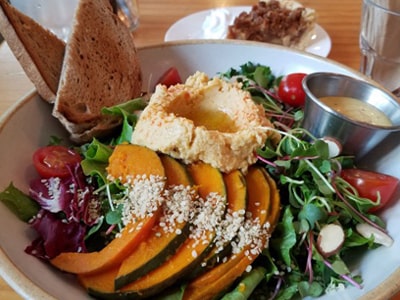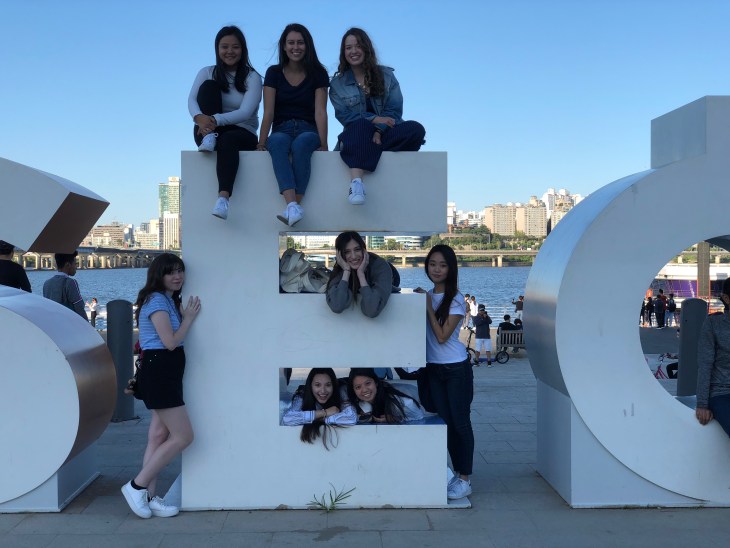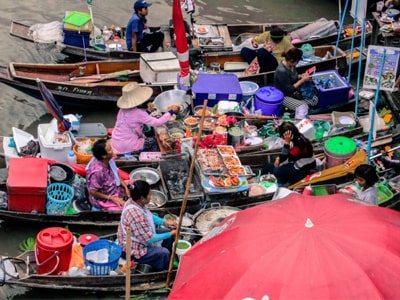Asia
China
Indigenous Communities: China is made up of provinces and autonomous regions that each have their own unique cultures and ancient history. Many of these ancient civilizations still exist today including but not limited to Mongols, Uyghurs, Tibetans, Hmong, and Zhuang. Each of these communities brings their own language, customs, and history to their everyday traditions and values.
Languages: China’s official language is Standard Chinese or Mandarin, which is based on the Beijing dialect. There are hundreds of other languages and dialects throughout the country and its autonomous regions including Cantonese, Shanghainese, Fuzhou, Taiwanese, Mongolian, and Tibetan.
Race & Ethnicity: About 91% of the population in China is Han Chinese while the remaining 9% includes Zhang, Hui, Manchu, Uighur, Miao, Yi, Tujia, Tibetan, Mongol, Dong, Buyei, Yao, Bai, Korean, Hani, Li, Kazakh, Dai, and other nationalities.
Religion: Just over 52% of China’s population identify as atheist or unaffiliated. Followers of folk religions make up 22% of the population, followed by Buddhists at about 18%. Other religions include Christianity and Islam, as well as a combined 1% of Hindus, Jews, and Taoists.
LGBTQIA+: While same sex relationships are not illegal in China, people within the LGBTQIA+ community are not afforded the same social and political protections as their cis heterosexual peers. No explicit anti-discrimination laws are in place for LGBTQIA+ people.
Disabilities Access: Larger cities like Beijing and Shanghai have worked to renovate some attractions and facilities to be more accessible to those with varying levels of physical abilities, including some subway systems built with elevators. Mental health still remains taboo and is not widely talked about.
Japan
Indigenous Communities: Some of the most prominent indigenous Japanese cultures include the Okinawans or Ryūkyūans and the Ainu. Among the indigenous communities there are many different languages and cultural features.
Languages: Japanese is widely spoken in Japan, with regional dialects varying across the country. Ryukyuan languages, known as indigenous languages, are also spoken in certain areas. English is also commonly spoken and most signage is in both standard Japanese and English
Race & Ethnicity: Over 97% of the population in Japan is Japanese, identifying either with one of the native groups or with the homogenous Japanese society. Small numbers of expatriates and immigrants live in Japan primarily from the Americas and Asia.
Religion: There are many religious temples around Japan though over 60% of the population identifies as non-religious. The two major religions in Japan are Shintoism and Buddhism, and even those who may identify as nonreligious will still honor ancient gods or ancestors at these public temples. Religion is viewed as highly personalized and is not as much of a tie to community as it is in the US.
LGBTQIA+: While same sex relationships are legal in Japan, people within the LGBTQIA+ community are not afforded the same social and political protections as their cis heterosexual peers. Certain areas of the law protect people of the LGBTQIA+ community against discrimination while others do not.
Disabilities Access: Japan has made great strides in creating accessibility for people with varying levels of physical ability, especially in major cities. Certain ancient sites and more rural areas may not have the same level of access as the cities.
South Korea
Indigenous Communities: Largely agrarian Korean cultures have existed on the land since ancient times. Though the current culture is very modern, many of the traditional values are maintained.
Languages: Korean is the official language of the country although English is also commonly spoken.
Race & Ethnicity: Korea is relatively racially homogenous, but the many ethnic groups create an ethnically diverse country. South Koreans have strong national pride especially as it relates to the divided North/South peninsula which has existed as two separate countries for under 100 years.
Religion: South Korea is mostly areligious, but Christianity makes up for about a 30% of the population and about 25% following Buddhist philosophies. Religion is not seen as a sensitive or deeply personal conversation topic.
LGBTQIA+: There is decent protection under South Korean law for the LGBTQIA+ community. Culturally there is not much visibility for the community and while this is changing with time there is still progress to be made. There are not as strict constraints to concepts of masculinity or femininity as experienced in US or Western culture.
Disabilities Access: Korea is a mountainous country and the terrain of many cities is hilly. As a result, physical spaces are at varying levels of accessibility for those with mobility limitations. Healthcare is readily accessible though mental health services vary greatly.
Thailand
Indigenous Communities: Largely agrarian Thai cultures have existed in Thailand since ancient times. Thailand is the only Southeast Asian country that has not been colonized by a European power so it maintains a strong cultural heritage.
Languages: The official language of Thailand is Thai, although about 10% of the population do speak other languages, including Khmer, Lao, Malay and Burmese. Throughout the regional communities there are another 70 or so living languages used.
Race & Ethnicity: Thailand is relatively racially homogenous and Thai people a strong sense of national freedom, loyalty and tradition.
Religion: Over ¾ of the country identifies as Buddhist. Buddhism is more commonly seen as a way of life for Thai people than a religion.
LGBTQIA+: Thailand has some LGBTQIA+ protections under the law though more legislation is needed. The trans community particularly has little protection under the law and there are active barriers to gender recognition and transition. Simultaneously, Thai culture has a more fluid and layered history and modern view of gender itself.
Disabilities Access: Physical spaces are not as accessible to those with mobility limitations. Thai city centers tend to be very dense while the rural communities lack modernized infrastructure. Similarly, mental health services are varied.
Vietnam
Indigenous Communities: Dozens of Vietnamese cultures have existed on the land since ancient times. Cultural impacts of Chinese and French colonization persist though there is still a strong national culture.
Languages: Vietnamese is the official and most spoken language. English, French and Mandarin are also common.
Race & Ethnicity: Vietnam is largely racially homogenous. The population is about 85% Vietnamese with the reminder of the population mostly from other South East Asian countries.
Religion: Vietnam is primarily and officially atheist. Most Vietnamese people identify as atheist or non-religious with less than 20% practicing Buddhism or Christianity.
LGBTQIA+: Vietnam has few protections under the law for the LGBTQIA+ community. Although not illegal, homosexuality is still considered taboo in much of Vietnamese culture.
Disabilities Access: Physical spaces may not be entirely accessible to those with mobility limitations. City centers tend to be very dense and while the rural communities lack modernized infrastructure. Similarly, mental health services may be different than those in the US.
Top 5: Best Vegan Spots to Visit in Seoul
With cute aesthetics, delectable treats, and creative themes, South Korea’s dining scene is a feast for the senses...
Read more
How My Journey to Asia Affected My Understanding of My Diverse Identity
I would always look in the mirror and be unsatisfied with the girl staring back. She had the eyes of her American father...
Read more
Veganism: A Comparison Between Thailand and America
Thailand: the land of smiles and flavors. In any given meal, a Thai tongue seeks to taste salty, savory, sweet, and sour all at...
Read more





